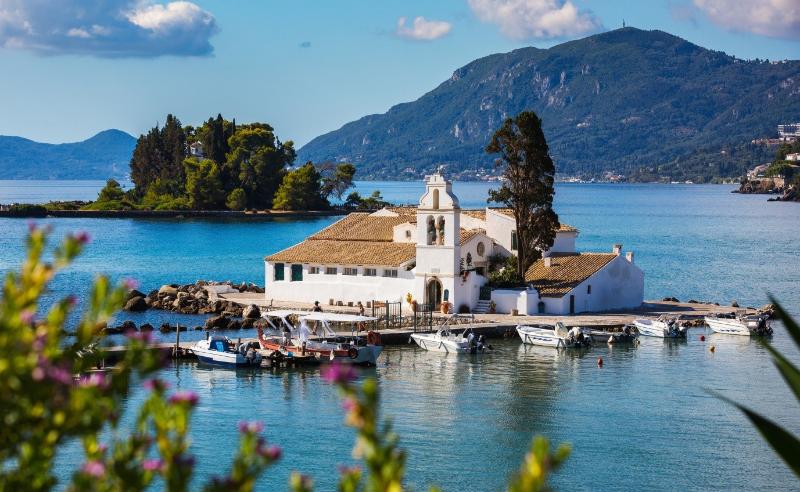The Island of Corfu


Corfu is the second largest island in the Ionian Sea. It is located near the Kefalonia geological fault formation. Its unification with modern Greece was concluded in 1864 after it was ceded by the British Empire under the Treaty of London. Corfu is also the place of origin of Ioannis Kapodistrias, the first elected head of state of independent Greece and one of the most distinguished politicians and diplomats in Europe.
According to myth, the Greek name of the place, Kerkyra or Korkyra (latin: Corcyra), is attributed to the beautiful nymph Korkyra with whom Poseidon, god of the sea, fell in love. Poseidon brought Korkyra to the island and offered her name to the place, which gradually evolved to Kerkyra. The island has been identified as the Homeric Island of Scheria, the last destination of Odysseus before returning to Ithaca, and its earliest inhabitants were the Phaeacians (Phaiakes) named after Phaeax, the son of Poseidon and Korkyra. The name Corfu derives from Κορυφώ, referring to the two highest peaks (koryphes), those of Pantocrator and Stravoskiadi.
Famous is the Philharmonic Society of Corfu. There are various music associations on the island and nineteen philharmonic bands that fuel its musical tradition. Some of Greece’s most talented musicians originated from Corfu and went on to become famous across the world. Aside from being a leading centre for the fine arts, Corfu is the home of the Ionian University established in 1984, in recognition of its contribution to education in Greece as the seat of the first Greek university in modern times, the Ionian Academy, founded in 1824.
Corfu is a very popular tourist destination. A journey to the island can offer visitors unique moments of relaxation, serenity and harmony. Corfiots have a long history of hospitality to foreign residents and visitors. One can encounter exceptional locations and attractions, including the Palaio Frourio, Neo Frourio, the Spianada square and the Liston, the Achilleion and the Byzantine fortress Angelokastro in Palaiokastritsa, to name but a few. It should be noted that the city’s old quarter has been declared as a World Heritage Site. Certainly deserved to be mentioned are the wonderful beaches with fine golden sand, such as Ai-Gordis, Glyfada, Lake Korission, Saint George, Marathias, Kassiopi, Sidari, Palaiokastritsa and many others. Various inland villages are also smothered in green, including Sinarades, Saint Matthew, Varypatades, Korakiana and Lefkimi. Finally, you may enjoy one of the most beautiful sunsets, such as that of Pelekas, where the sun sinks in the immense blue of the sea and the colour of sky acquires all colours of iris.
Call the department
+44 (0)151 794 5079